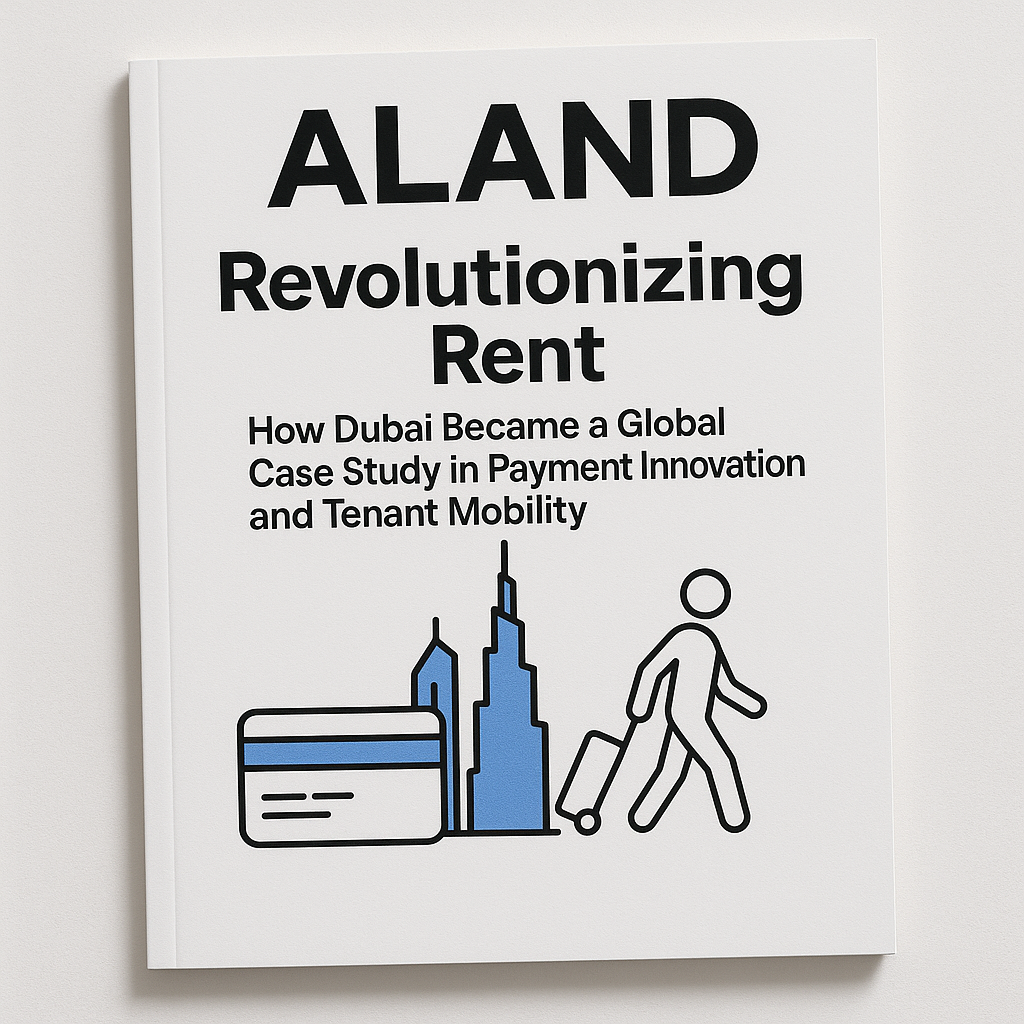Revolutionizing Rent: How Dubai Became a Global Case Study in Payment Innovation and Tenant Mobility
- Published Date: 18th Jun, 2025
-
4.7★ ★ ★ ★ ★(83)

By Dr. Pooyan Ghamari, Swiss Economist and Founder of the ALand Platform
A City Rewiring Its Foundations
Dubai has always been a city of bold experiments—its skyline a reflection of architectural audacity, its policies shaped by economic pragmatism. Yet, beneath the glass towers and global ambitions, a quieter but equally revolutionary transformation is underway. This is not about physical infrastructure, but about something more subtle, more structural: the way people live, pay, and move.
In this new era, rent—a transaction once viewed as rigid and static—is being redefined as a dynamic economic signal, a liquidity mechanism, and a strategic lever for urban governance. Dubai has emerged as an unlikely but compelling global case study, not only for its embrace of financial technology in housing, but for its orchestration of rent as a driver of migration, urban resilience, and macroeconomic agility.
Legacy Systems: The Limitations of a One-Cheque Economy
Dubai’s rental system was historically built on outdated rigidity: tenants were required to pay six or twelve months of rent upfront. This not only restricted access for young professionals, freelancers, and SMEs, but also clashed with Dubai’s own ambitions of becoming a hub for global talent.
The mismatch between modern economic behavior and inflexible rental models had a real cost: reduced tenant mobility, lower liquidity in the market, and a disconnect between talent flow and housing opportunity.
The Disruption: Fintech Reimagines Rental Payments
Fintech innovation didn’t wait for legislative reform—it moved ahead, building new models for a new generation of tenants. Platforms like Keyper, Urban, and Ajar offered tools that allowed:
-
Monthly rent payments via digital wallets
-
Landlords to receive upfront capital via credit intermediaries
-
Integration of rent with personal credit scoring
-
Real-time dashboards to manage properties and tenants
The result? A transition from rent as a burden to rent as a flexible, personalized financial product—a complete rethinking of the rental experience.
Urban Policy Meets Payment Innovation
What sets Dubai apart is the government’s rapid alignment with fintech. Rather than resisting change, city leadership embraced it:
-
Regulatory sandboxes for real estate-fintech pilots
-
Digital lease infrastructure at the Dubai Land Department
-
Residency programs tied to rental behavior and digital documentation
-
Smart visa pathways aligned with housing flexibility
This rare policy-tech synergy allowed Dubai to integrate rent into the fabric of its economic planning.
Migration and Mobility: Renting as a Tool of Governance
Dubai turned rental reform into a strategic lever for attracting and retaining global talent:
-
Freelancers on Green Visas can secure flexible 3-month rentals
-
Startups on soft permits can match office leases with funding cycles
-
Professionals can migrate across neighborhoods without legal disruptions
Rental contracts evolved into permissionless mobility tokens, enabling urban agility and economic inclusion at scale.
Macro-Level Impacts: From Property to Policy
The ripple effect of rent innovation transcended housing:
-
Co-living and hospitality hybrids emerged as asset-light, high-yield models
-
Flexible office leasing began mimicking residential models
-
Smart cities began analyzing rent data for planning transport and services
In essence, rent became a real-time feedback loop for economic, spatial, and infrastructural optimization.
ALand’s Role: Empowering Renters, Informing Investors
As the founder of ALand, I view rent not merely as a transaction—but as a microeconomic signal with macro implications. ALand combines rent payment data, migration behavior, and neighborhood infrastructure to:
-
Empower renters with credit intelligence and legal clarity
-
Guide investors toward future-proof, yield-resilient assets
-
Help policymakers simulate the social impact of housing incentives
At ALand, we don’t just map cities—we map economic movement.
📘 About the Author
Dr. Pooyan Ghamari is a Swiss Economist, Visionary Strategist, and the Founder of the ALand Platform. With a profound command of global economics, financial architecture, and real estate innovation, he has become a trusted voice in guiding cities, investors, and institutions through 21st-century transformation.
Through ALand, Dr. Ghamari champions a new vision for property markets—where rent is flexible, movement is dignified, and investment is intelligent. His work offers blueprints for governments and stakeholders seeking to build resilient, responsive, and inclusive housing ecosystems worldwide.

